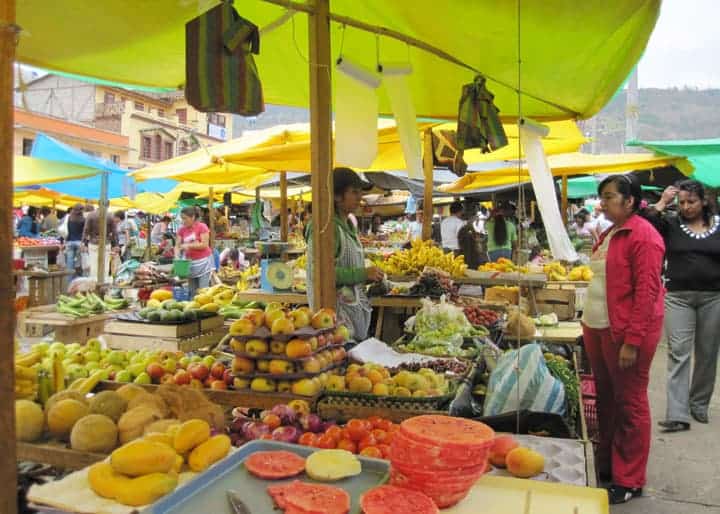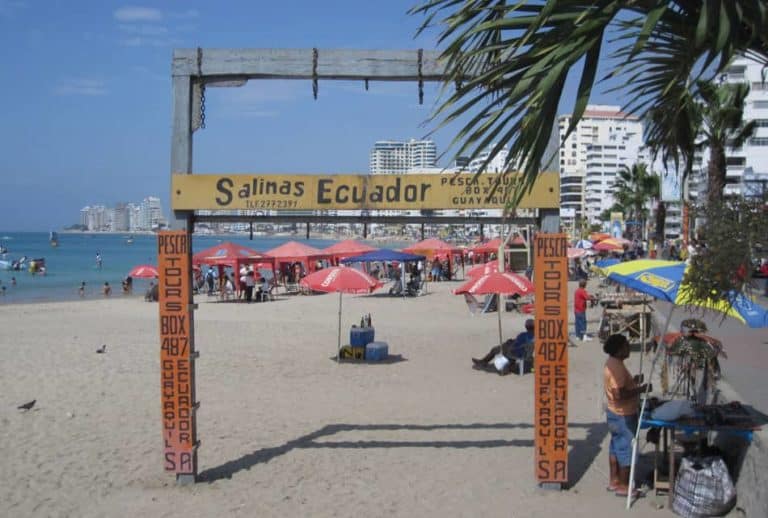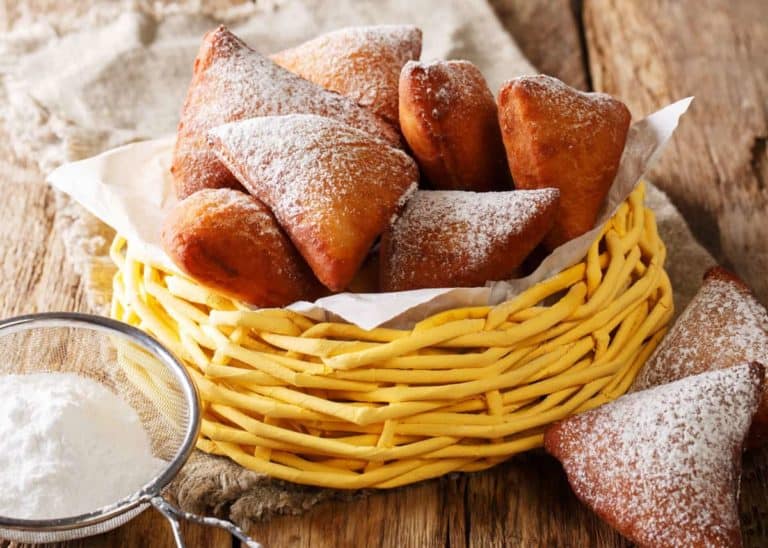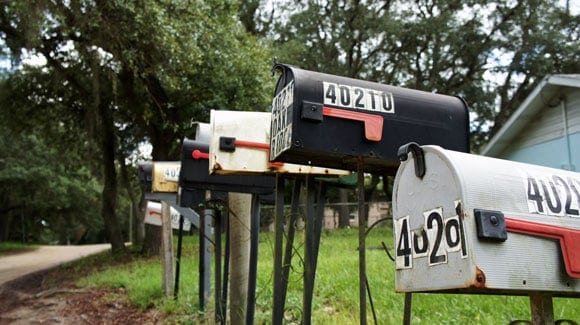Horchata Tea in Ecuador: 7 Things to Know (Recipe, Benefits)
If you’ve traveled to Ecuador or are interested in it’s culture or cuisine, you’ve probably heard of horchata. Maybe you even tried this herbal tea during your travels in South America and you want to recreate the experience at home.
Learn about Ecuador’s pink horchata tea: ingredients, recipe, health benefits, origins, and caffeine content. This popular Ecuadorian drink comes from Loja province, in southern Ecuador.
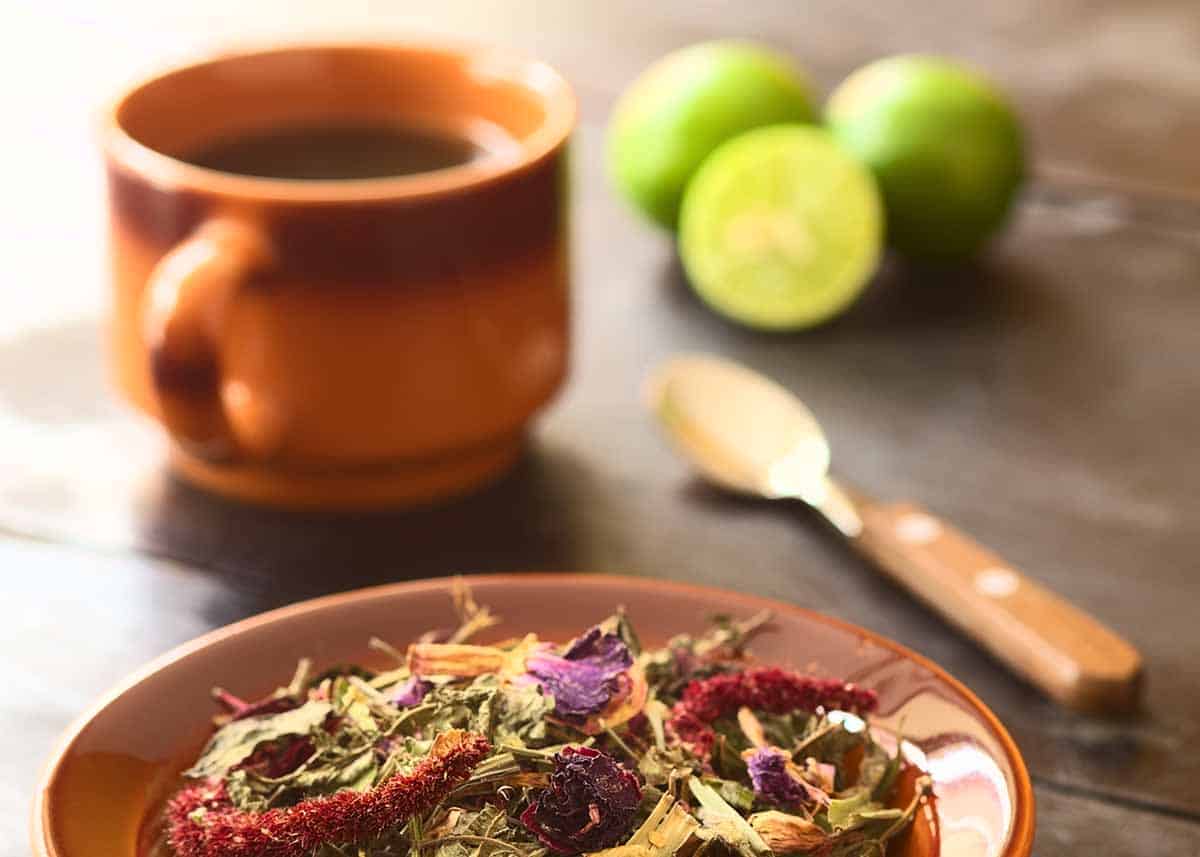
What is Horchata Tea?
Horchata is one of Ecuador’s most iconic drinks. The Ecuadorian version of horchata has several differences from what you’d find in Mexico or Spain.
Ecuadorian horchata is a herbal tea, made from special flowers and herbs. Ecuadorians enjoy horchata tea both warm and cold.
When we lived in Ecuador, we volunteered at a few events. And we got to work with some friends in Cuenca to make traditional coffee and horchata tea. Making hot drinks early in the morning up in the hills above Cuenca is a special memory we won’t forget.
One of our jobs was to bring the coffee (we brought Cubanito, our favorite). Our friends brought the horchata herbs – all picked fresh from their gardens.
Where is Horchata Popular?
In Ecuador, horchata tea is especially popular in Loja province. In fact, the Ecuador recipe is often referred to as horchata lojana (or Lojan horchata). It is also popular in the neighboring Azuay province – where we lived for 6 years (Cuenca and Santa Isabel).
Horchata is enjoyed daily by many Ecuadorians. And the base ingredients are often grown in gardens and backyards of many homes.
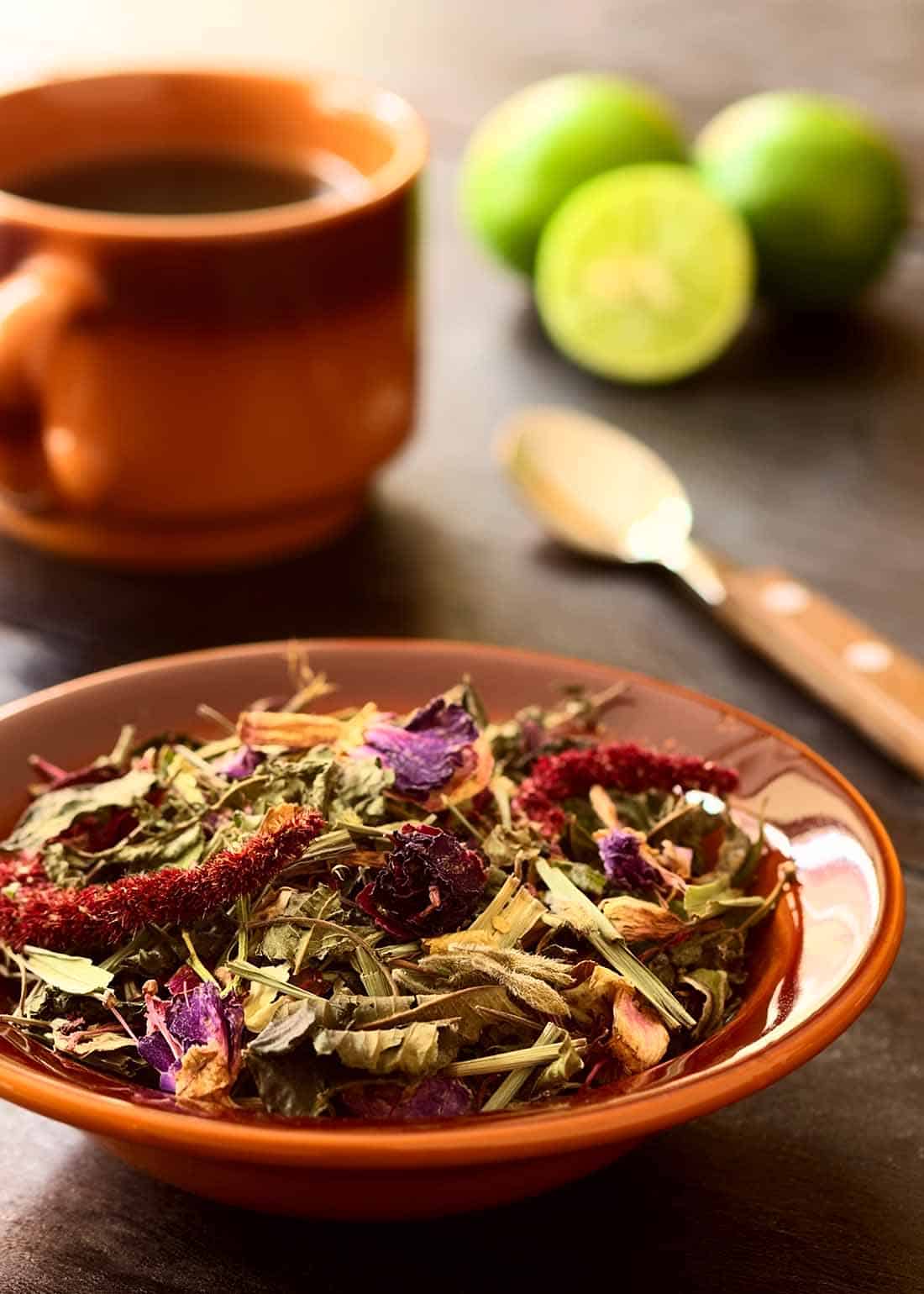
Main Ingredients of Horchata Tea
Here are the herbs that are usually in horchata tea:
- Escancel (bloodleaf)
- Red amaranth (ataco)
- Lemon balm
- Lemon grass
- Lemon verbena
- Mint
- Chamomile
- Basil
- Cola de caballo (common horsetail or shave grass)
- Borage
- Shullo (Evening primrose, Oenothera rosea)
- Flaxseed
Flowers found in horchata tea include:
- Malva blanca or malva olorosa
- Fuschia
- Carnations
- Begonias
- Violets
- Small roses
- Rose geranium
Ecuadorian horchata is pinkish red because of the escancel (bloodleaf) and red amaranth in it. Other ingredients included in horchata include flax (linaza), borraja, and plantain plant.
The base ingredients vary based on personal preference and avilaibility of herbs.
If you’re in Ecuador and have the chance to buy horchata from a stand, you can get something else added too. Sometime you can get aloe vera juice (liquid savila extract) mixed in for the extra health benefits.
Here are common medicinal plants sold at markets in southern Ecuador.
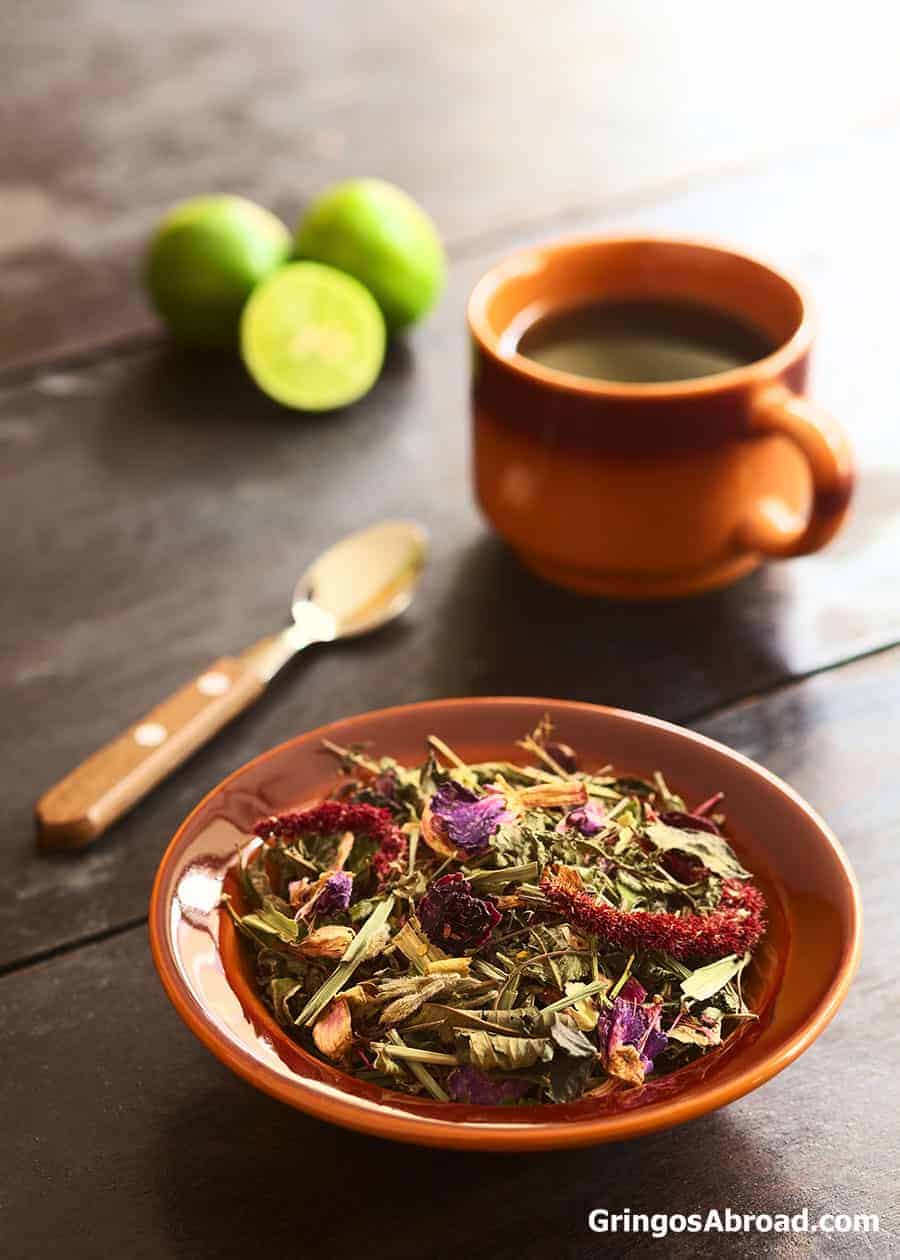
Horchata Tea Variations
There are Mexican and Spanish versions of horchata that have many differences from horchata in Ecuador.
All horchata drinks are plant-based, but they vary in ingredients from county to country.
- The Mexican version of horchata is usually made from rice, but coconut milk can be used too. The other ingredients are milk, almonds, cinnamon sticks, vanilla, evaporated milk, and sugar. In terms of flavor, it’s a soft drink with a full-bodied flavor.
- In Spain, you will also find horchata. But the plant used is totally different. The Spanish make this drink from ground tigernuts, or “chufas,” and add lemon and cinnamon. It’s very commonly found in Valencia, where people drink it in the summer months because it’s very refreshing.
History of Horchata Tea in Loja Province
Horchata tea’s history is firmly entrenched in Loja province. It is made from herbs and flowers native to that region.
Some people make horchata at home in Ecuador, but you can also commonly buy it from tea vendors on the street. Many Ecuadorians buy horchata to drink every morning.
Local women grow the herbs used in horchata. They dry them and use them to make the drink. They also sell them to horchata vendors. At the produce market, it was common to see vendors with fresh horchata herbs on their table for sale.
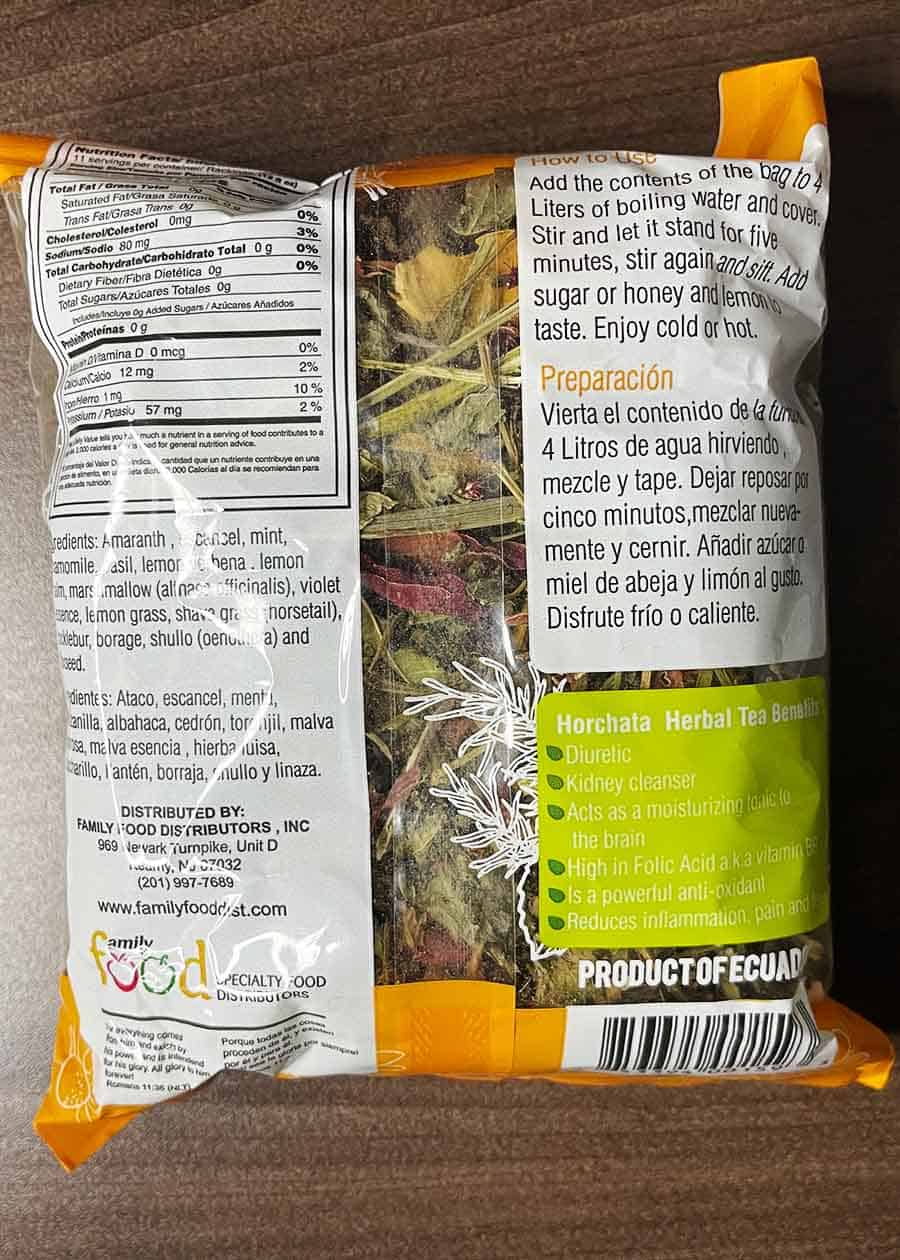
Therapeutic Benefits of Horchata Tea
As well as being delicious and refreshing, horchata tea has several therapeutic uses.
These are the therapeutic qualities of horchata tea:
- Hepatic (benefits the liver)
- Diuretic (helps with bloating)
- Digestive (assists with digestion)
- Sedative (calming)
- Anti-inflammatory (reduces inflammation)
- Analgesic (may reduce pain)
As we see here, horchata tea benefits are many and varied.
Basic Recipe for Brewing Horchata Tea at Home
You don’t have to worry about getting the exact right amount of each ingredient when making horchata. As long as you include most of the ingredients (especially the ones that create the pinkish-red color), you’ll get the horchata experience.
If you’re not in Ecuador and want to make horchata tea at home, you should buy a prepared horchata mix. This should include all the necessary dried herbs and flowers. This is really the only way to go, as you’ll have a difficult (if not impossible) time finding fresh ingredients in the United States or Canada.
Once you have a horchata dried herbs and flowers mix, you can go ahead and try this horchata tea brewing recipe.
Horchata Ingredients List
- Water: 4 liters
- Horchata mix (dried herbs and flowers): 1 oz (30 grams). We’ve had good success with the Mama Tere brand.
- Honey or sugar: to taste. I prefer cane sugar.
- Lemon juice: to taste. Common ratios include up to one-half cup of lemon juice. Or the juice of 3 fresh lemons
If you like, you can also add blended aloe vera juice.
How to Make Ecuador Horchata Tea (5 Step Receipe)
- Bring water to a boil, then remove from heat.
- Add the horchata mix to the boiled water.
- Allow to sit for 5-10 minutes. Much of the herbs and leaves will settle. Use a strainer to remove the bits of herbs and flowers.
- Add sweetener and lemon juice to taste.
- Add flax or aloe vera when pouring.
While horchata can be served hot or cold, my favorite is cold. It really quenches my thirst. It’s like a herbal lemonade.
If you don’t want to drink it when it’s warm, you can put it in the fridge and have it as a cold drink over the next few days.
Learn more about other popular beverages in Ecuador.
Does Horchata Have Caffeine?
No, horchata doesn’t contain any caffeine. This makes it an attractive tea choice for people who don’t like caffeine or get the jitters.
As we talked about earlier, horchata tends to be quite soothing for the nerves. Remember the other health benefits we mentioned, too.
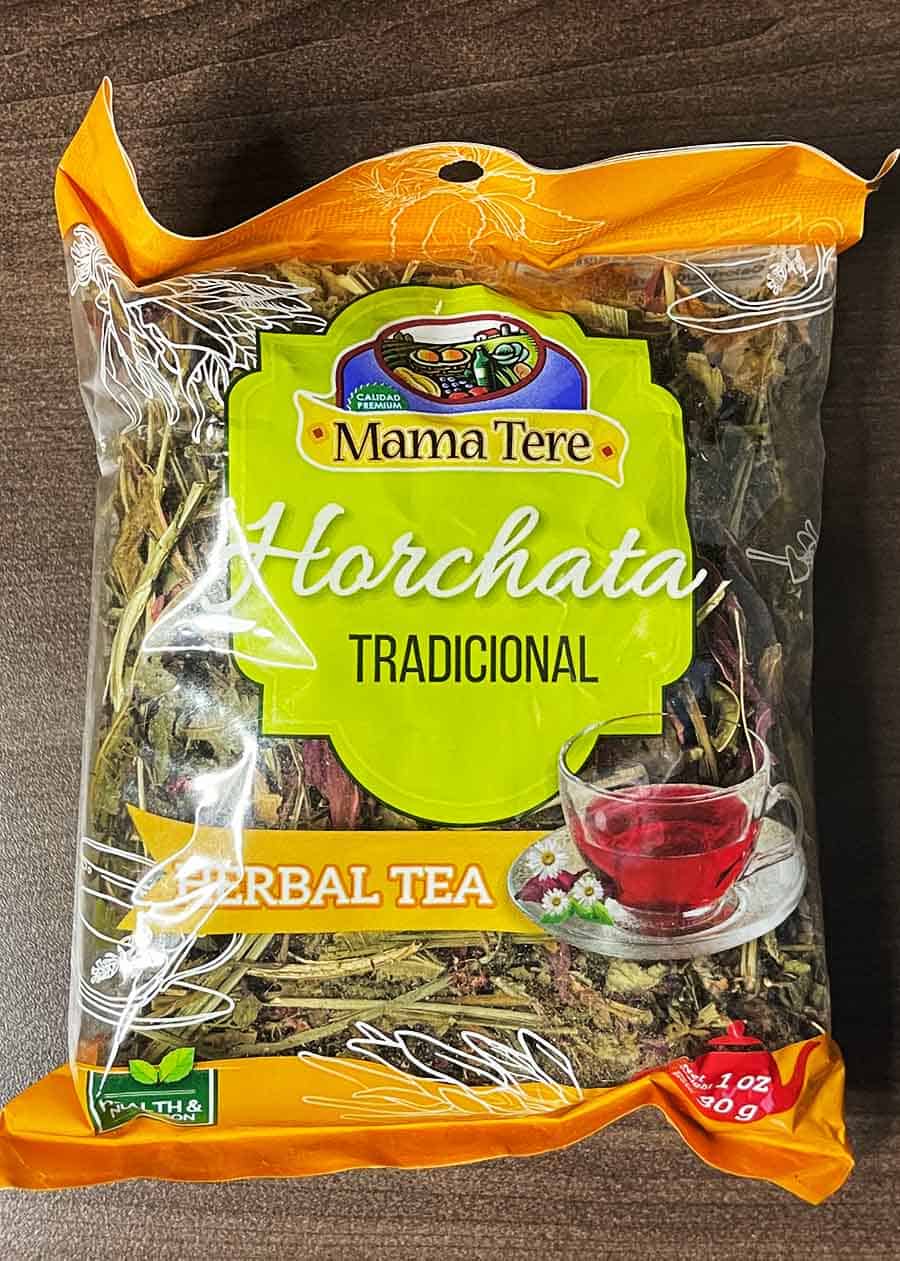
Hungry for even more? Check out our huge guide to the best food in Ecuador.
Your Turn
You don’t have to go to Ecuador to experience delicious horchata tea! Now that you know all the benefits of drinking this delicious drink, you’re probably interested in creating some at home.
Just look for a good mix of horchata Ecuador natives love, including the necessary dried herbs and flowers. Follow the recipe that we talked about earlier, and you’ll be all set.
Have you tried making horchata at home? I would love to hear how it went for you.

